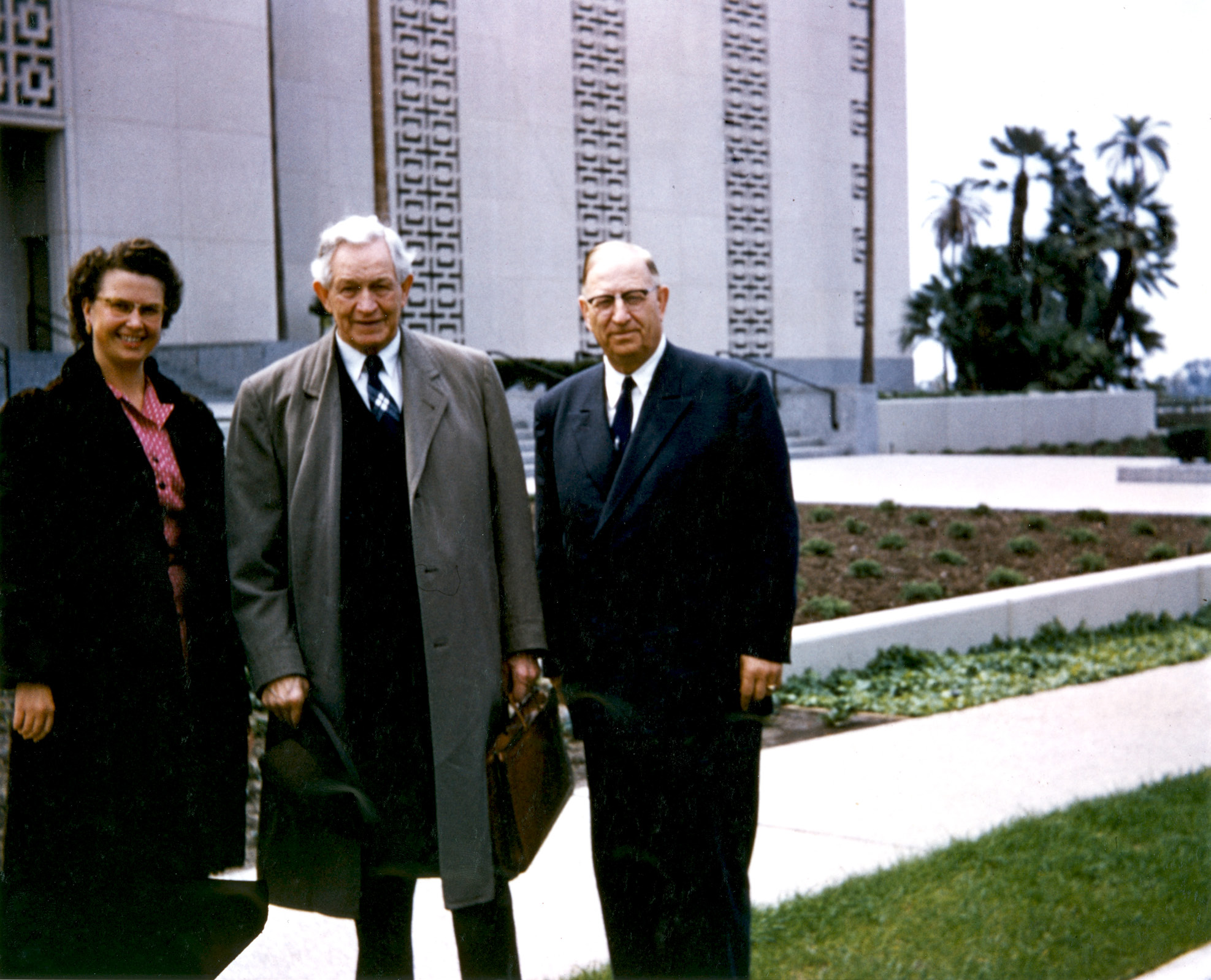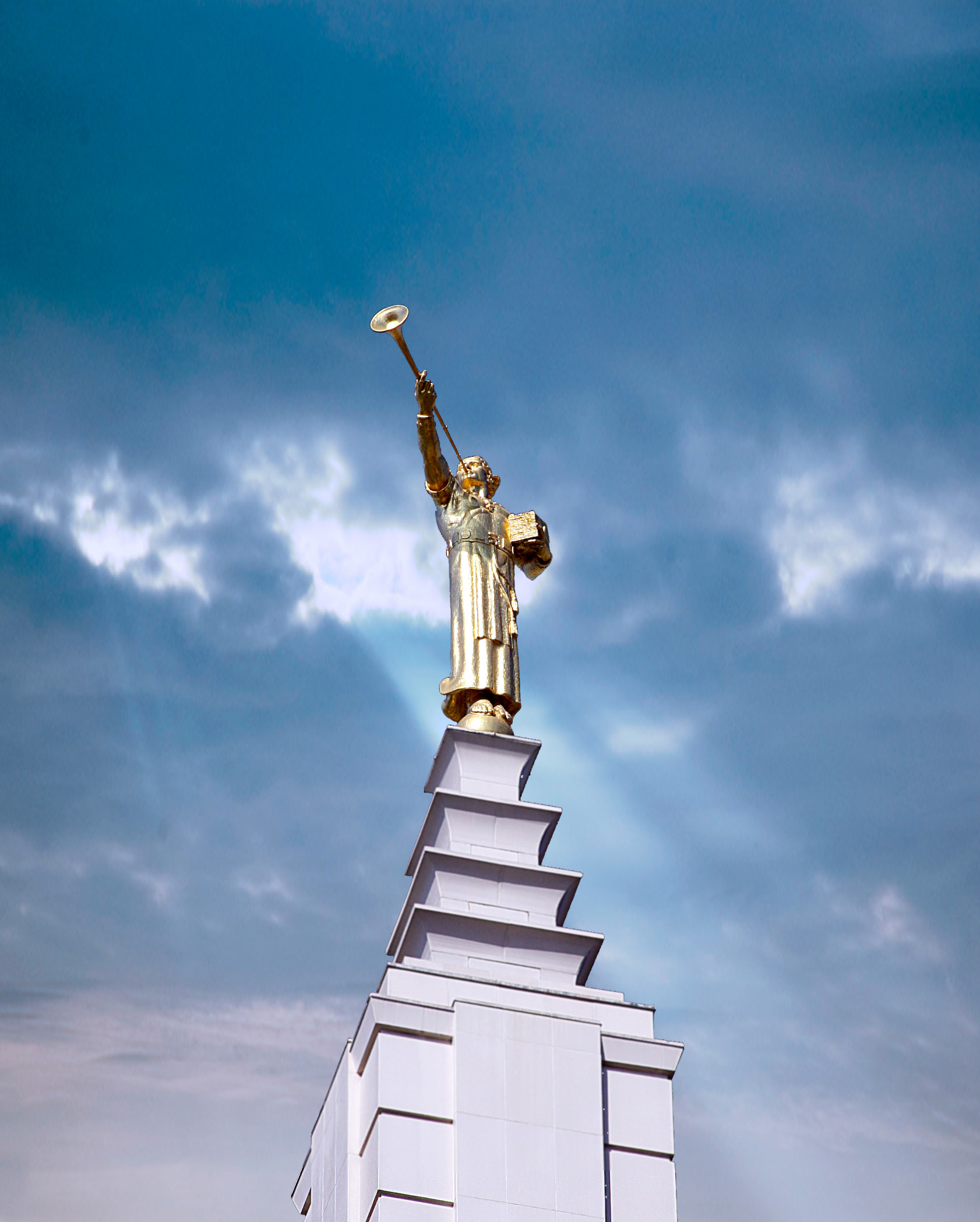Preface
Richard O. Cowan, "Preface" in A Beacon on A Hill: The Los Angeles Temple (Religious Studies Center, Brigham Young University; Salt Lake City: Deseret Book, 2018), vii–xi.
Latter-day Saints regard their temples as the most sacred places on earth, like a little bit of heaven in our midst. In them, they may receive the highest blessings of their faith, including being married for all eternity rather than just “‘til death do you part.”
While growing up in Southern California, I became interested as a youth in temples through participating in excursions sponsored by the Los Angeles Stake to the nearest temples in St. George, Utah, and Mesa, Arizona. I longed for the time when one of these sacred sanctuaries would be built closer to home in Southern California. I would be a young adult when my dream was realized in 1956.
After publishing other books on Latter-day Saint temples, I began planning a work on the Los Angeles Temple. Not only was it the local temple which I had hoped for as a youth and had witnessed being built as a college student, the one in which I was married, but it had a distinctive place among the Church’s growing family of temples. It was the largest the Church had built up to that time and had the distinction of being the first Mormon temple erected in a large urban area in which the Latter-day Saints were only a small minority. Over the years, it came to serve a more diverse group than perhaps any other temple in the Church.
 From left to right: Thonna Madsen, compiler of the Los Angeles Temple Historical Scrapbook; President David O. McKay; and A. Merlin Steed, bureau of information director. (Los Angeles Historical Scrapbook)
From left to right: Thonna Madsen, compiler of the Los Angeles Temple Historical Scrapbook; President David O. McKay; and A. Merlin Steed, bureau of information director. (Los Angeles Historical Scrapbook)
Jack B. McEwan, who served as president of the Los Angeles Temple from 1986 to 1989, and his wife, Betty, the temple matron, were concerned about the sparsity of history compiled about this temple. While attending the April 1988 general conference in Salt Lake City, they visited the Church Historian’s Office, whose staff provided valuable assistance in assembling information about the temple’s past. Howard W. Hunter, who had earlier been president of the Pasadena Stake and who had become a member of the Quorum of the Twelve Apostles, encouraged President McEwan in his efforts: “I was interested in what you said about your research on the history of the temple. It is a great story and has been one of the major influences on the growth of the Church in the Southland. You will be doing a great work if you can pull that history together.”[1]
Thonna Madsen, a temple worker, later wrote to Sister Betty McEwan: “When you bore your testimony in prayer meeting at the Temple in May [1988], and expressed your desire to compile a scrapbook on the Los Angeles Temple, something inside of me said, ‘I want to help.’” Soon afterward, President McEwan asked Sister Madsen to begin compiling the history into scrapbooks for the temple with the cooperation of the historical department at Church headquarters. Concerning this assignment, Sister Madsen wrote: “Thanks for letting me help with this project. I have found much joy and happiness in doing this, and it has become very interesting.”[2] She eventually put together thirteen volumes, which brought the history up through 2011. The scrapbooks became available to workers in the temple, but its history needed to be made more broadly accessible. Hopefully this book will fill that need.
When Sister Marilyn Mills, Church history adviser for the Church’s North America West Area, learned of my interest in researching the Los Angeles Temple’s history, she encouraged me to move forward. Since then, she has been of significant help in several ways—arranging for key resources to be scanned, organizing a campaign to gather personal stories, conducting interviews with past temple presidents, and much more. She has also provided valuable direction as the preparation of the manuscript moved forward. Clint D. Christensen, one of my former graduate students and now a member of the Church History Library Department staff with a particular responsibility over temple histories, has also provided highly appreciated encouragement and direction.
I bring a broad background to this project. After earning a doctorate in history at Stanford University in 1961, I taught courses in religion at Brigham Young University in Provo, Utah, for over fifty years. My research and teaching focus has been on the Doctrine and Covenants, a book Latter-day Saints accept as scripture, and on Latter-day Saint history since 1900. I have authored more than a dozen books related to these topics, including four specifically about Latter-day Saint temples. I have particularly enjoyed developing and teaching a new course on this subject.
An important feature of this book is the large number of insightful photographs, particularly related to the Los Angeles Temple’s construction. Photos by George Burgstrom and Howard Winn were published in Latter-day Saint newspapers, including the California Intermountain News and the official Church News. This book also includes dozens of never-before-published images by Paul L. Garns, a fire department photographer in Los Angeles who regularly visited the temple site to carefully document construction progress. He was able to gain access to unusual vantage points that make today’s observers quite envious.
Knowing of my interest in the temple, Paul Garns shared some of his photos with me while I was serving my LDS mission in New Mexico and Texas during the 1950s. Over the decades, I saved my copies of his photos, but I was aware that there were many more. I suspected that members of the Garns family might have additional photos, and I wondered where they might live. Following up on some fortuitous leads, I was surprised to discover that Paul’s son Gerry was teaching photography right here at BYU! We shared photographs with each other, and a number of them are included in this volume. I appreciate the assistance of my son, Lee R. Cowan, who teaches art on the college level and who has helped make a selection of the photographs to include in this book.
Several other individuals have provided vital information needed for this work. These include former temple presidents and Brian Sheffield, the temple’s recorder at the time this book was written.
Still others have made important contributions as well. Alison Coutts, an experienced and excellent editor who served with me on the committee preparing materials for the Provo City Center Temple’s cornerstone, has generously reviewed the manuscript for this present book. Thomas Wayment, publications director at Brigham Young University’s Religious Studies Center, has provided counsel and encouragement regarding this project. Devan Jensen, executive editor at the RSC, kindly answered repeated questions regarding style and form. Brent Nordgren, the RSC’s graphics specialist and marketing director, generously provided technical assistance with illustrations. Emily Strong is the capable graphic designer of this book. We express thanks to RSC editor Shirley Ricks and editing interns Elizabeth Smith and XX.
Appreciation is also due to a group of Brigham Young University students who have provided important help to me with this project. Clara Hodder Smith has spent many hours assisting with researching, collecting, organizing, and evaluating the materials used in this work. The staff in BYU Religious Education’s faculty support center have provided assistance in various ways; for example, they have transcribed in digital format many of the documents included or quoted here. My daughter Tricia Cowan has also provided essential assistance, particularly after I moved out of my campus office in 2017. Without their help, this project could not have been accomplished.
I hope you will find this book to be informational, interesting, and inspirational. In addition to facts about the Los Angeles Temple and its history, I hope you will gain insights that will enrich your appreciation for Latter-day Saint temples and perhaps contribute an added dimension to your service in them.
Notes
[1] Howard W. Hunter to Jack B. McEwan, April 7, 1988, copy in possession of the author.
[2] Thonna Madsen to Betty McEwan, September 6, 1988, copy in possession of the author.
